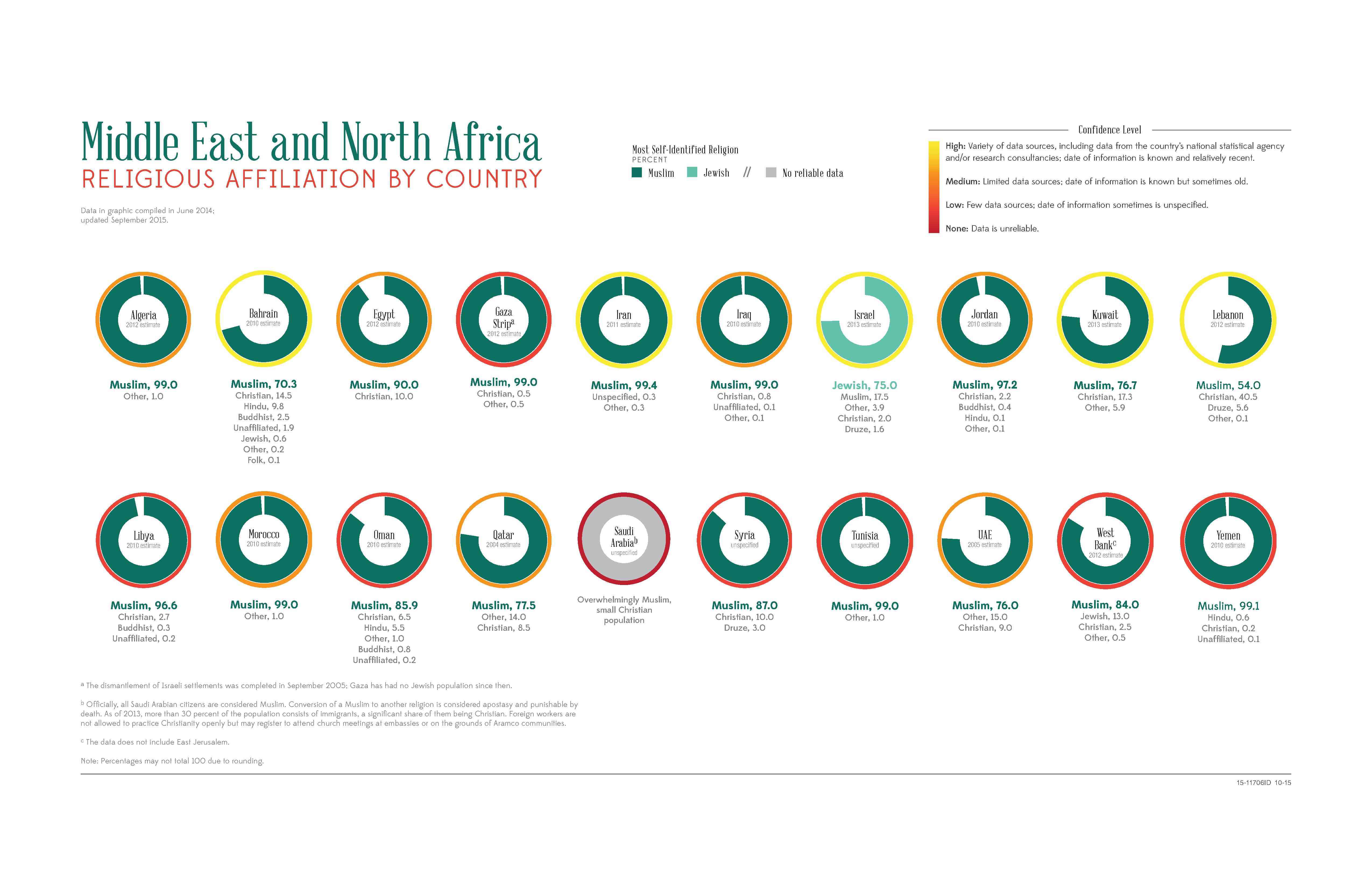
22,933,531 (2023 est.)
note: approximately 22,900 Israeli settlers live in the Golan Heights (2018)
noun: Syrian(s)
adjective: Syrian
Arab ~50%, Alawite ~15%, Kurd ~10%, Levantine ~10%, other ~15% (includes Druze, Ismaili, Imami, Nusairi, Assyrian, Turkoman, Armenian)
Arabic (official), Kurdish, Armenian, Aramaic, Circassian, French, English
major-language sample(s):
كتاب حقائق العالم، المصدر الذي لا يمكن الاستغناء عنه للمعلومات الأساسية (Arabic)
ڕاستییەکانی جیهان، باشترین سەرچاوەیە بۆ زانیارییە بنەڕەتییەکان (Kurdish)
The World Factbook, the indispensable source for basic information.
Arabic audio sample:
Kurdish audio sample:
Muslim 87% (official; includes Sunni 74% and Alawi, Ismaili, and Shia 13%), Christian 10% (includes Orthodox, Uniate, and Nestorian), Druze 3%
note: the Christian population may be considerably smaller as a result of Christians fleeing the country during the ongoing civil war

0-14 years: 33.27% (male 3,914,737/female 3,716,362)
15-64 years: 62.58% (male 7,141,423/female 7,209,386)
65 years and over: 4.15% (2023 est.) (male 445,288/female 506,335)
total dependency ratio: 55.4
youth dependency ratio: 53
elderly dependency ratio: 7.4
potential support ratio: 13.5 (2021 est.)
total: 23.9 years (2023 est.)
male: 23.3 years
female: 24.5 years
6.39% (2023 est.)
22.2 births/1,000 population (2023 est.)
4.1 deaths/1,000 population (2023 est.)
45.8 migrant(s)/1,000 population (2023 est.) NA
significant population density along the Mediterranean coast; larger concentrations found in the major cities of Damascus, Aleppo (the country's largest city), and Hims (Homs); more than half of the population lives in the coastal plain, the province of Halab, and the Euphrates River valley
note: the ongoing civil war has altered the population distribution
urban population: 57.4% of total population (2023)
rate of urbanization: 5.38% annual rate of change (2020-25 est.)

2.585 million DAMASCUS (capital), 2.203 million Aleppo, 1.443 million Hims (Homs), 996,000 Hamah (2023)
at birth: 1.06 male(s)/female
0-14 years: 1.05 male(s)/female
15-64 years: 0.99 male(s)/female
65 years and over: 0.88 male(s)/female
total population: 1.01 male(s)/female (2023 est.)
30 deaths/100,000 live births (2020 est.)
total: 15.5 deaths/1,000 live births (2023 est.)
male: 17.1 deaths/1,000 live births
female: 13.8 deaths/1,000 live births
total population: 74.6 years (2023 est.)
male: 73.1 years
female: 76.1 years
2.74 children born/woman (2023 est.)
1.33 (2023 est.)
N/A
improved: urban: 99.6% of population
rural: 100% of population
total: 99.8% of population
unimproved: urban: 0.4% of population
rural: 0.7% of population
total: 0.2% of population (2020 est.)
N/A
1.29 physicians/1,000 population (2016)
1.4 beds/1,000 population (2017)
improved: urban: 99.5% of population
rural: 99.5% of population
total: 99.5% of population
unimproved: urban: 0.5% of population
rural: 0.5% of population
total: 0.5% of population (2020 est.)
27.8% (2016)
total: 0.13 liters of pure alcohol (2019 est.)
beer: 0.02 liters of pure alcohol (2019 est.)
wine: 0 liters of pure alcohol (2019 est.)
spirits: 0.11 liters of pure alcohol (2019 est.)
other alcohols: 0 liters of pure alcohol (2019 est.)
N/A
52.6% (2023 est.)
N/A
definition: age 15 and over can read and write
total population: 86.4%
male: 91.7%
female: 81% (2015)
total: 9 years
male: 9 years
female: 9 years (2013)
NOTE: The information regarding Syria on this page is re-published from the 2024 World Fact Book of the United States Central Intelligence Agency and other sources. No claims are made regarding the accuracy of Syria 2024 information contained here. All suggestions for corrections of any errors about Syria 2024 should be addressed to the CIA or the source cited on each page.
This page was last modified 04 May 24, Copyright © 2024 ITA all rights reserved.